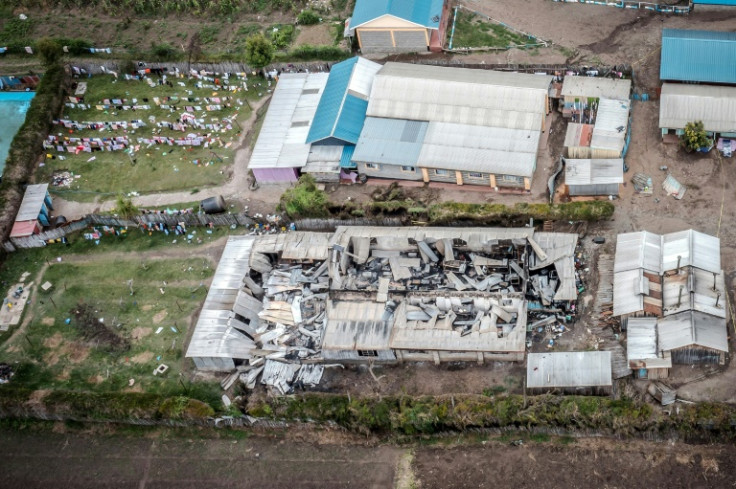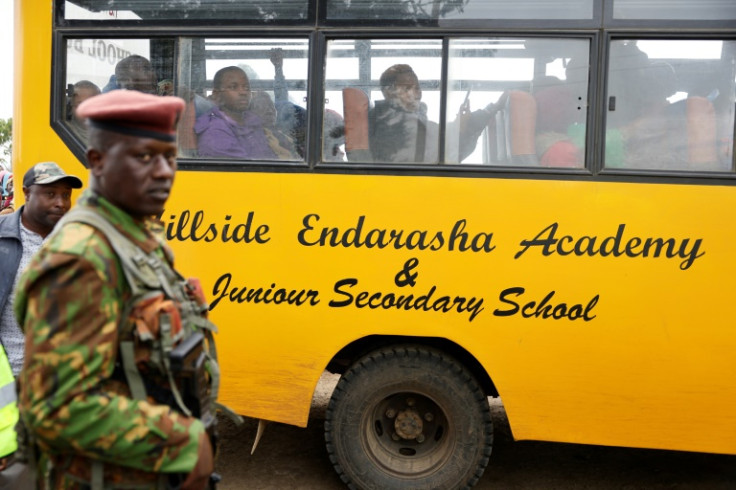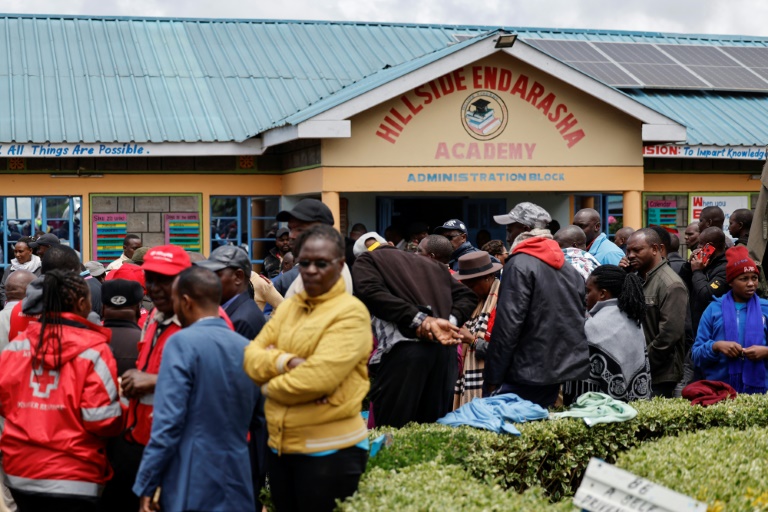Kenyan police stepped up their investigations Saturday into a prime school dormitory blaze that has now cost the lives of 18 boys, as families faced an agonising wait for news of their missing loved ones.
“It is a catastrophe beyond our imagination,” government spokesman Isaac Mwaura said at a press briefing at the Hillside Endarasha Academy where the fire struck around midnight Thursday.
The flames engulfed a dormitory at the primary school where more than 150 boys aged between nine and 13 were sleeping.
Mwaura said 18 children had died in the blaze at the school in the central county of Nyeri, up from a previous toll of 17 given by President William Ruto on Friday.
“It is truly devastating for the nation to lose such a number of young and promising Kenyans. Our hearts are heavy,” Mwaura said.
Deputy President Rigathi Gachagua had said on Friday that 70 youngsters were still unaccounted for after the fire.
Mwaura said about 20 had now been accounted for as of Saturday, but declined to give any further details.
The cause of the inferno is not yet known but homicide investigators and forensic experts are at the school, where media access has been blocked.
The charred bodies of victims, which police had said were burnt beyond recognition, were still in the dormitory, now a blackened shell with its corrugated iron roof completely collapsed.
“Today we want to begin the process of DNA testing,” Kenya’s chief homicide detective Martin Nyuguto told AFP.
Ruto has declared three days of national mourning from Monday after what he described as an “unfathomable tragedy”.
“I pledge that the difficult questions that have been asked such as how this tragedy occurred and why the response was not timely will be answered; fully, frankly, and without fear or favour,” Ruto said in a statement.
“All relevant persons and bodies will be held to account.”
Kenya’s National Gender and Equality Commission said initial reports indicated the dorm was “overcrowded, in violation of safety standards”.
The blaze has highlighted the issue of safety at schools in Kenya, after numerous similar disasters over the years.
In a statement from the Vatican on Saturday, Pope Francis said he was “deeply saddened” at the loss of young life and expressed his “spiritual closeness to all who are suffering the effects of this calamity, especially the injured and the families who grieve”.
On Friday, tensions were running high among families gathered at the school, anxious for news of their missing children.
Many broke down after officials took them to see the bodies in the destroyed dorm.
“Please look for my kid. He can’t be dead. I want my child,” one woman cried in distress.
The Kenya Red Cross said it was on the ground assisting a multi-agency response team and providing psychosocial support to traumatised pupils and families.
Muchai Kihara, 56, said he was lucky to find his 12-year-old son Stephen Gachingi alive after rushing to the school around 1 am on Friday.
“I cannot begin to imagine what he went through. I am happy he is alive but he had some injuries at the back of his head and the smoke had affected his eyes,” he told AFP.
“I just want him to be counselled now to see if his life will return to normal,” Kihara said as he sat with his son on a bench beside a white Red Cross tent where families are being counselled.
In 2016, nine students were killed by a fire at a girls’ high school in the sprawling slum neighbourhood of Kibera in Nairobi.
In 2001, 67 pupils were killed in an arson attack on their dormitory at a secondary school in Machakos south of Nairobi.
In 1994, 40 school children were burned alive and 47 injured in a fire that tore through a girls’ school in Tanzania’s Kilimanjaro region.
In 2022, a blaze ravaged a school for the blind in eastern Uganda. Eleven pupils died after they were trapped inside their shared bedroom because the building had been burglar-proofed, government ministers said at the time.
AFP

AFP

AFP







